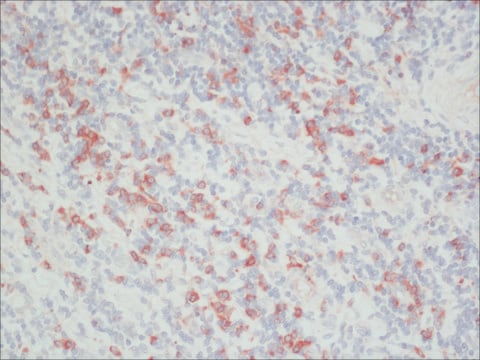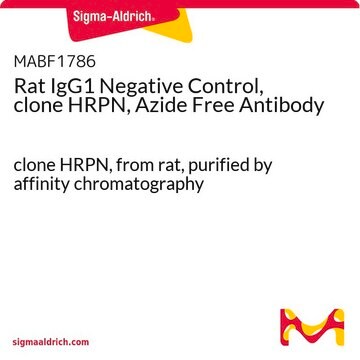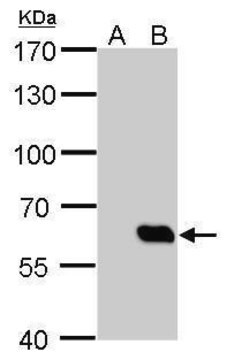ROAHAHA
Roche
Anti-HA mit hoher Affinität
from rat IgG1
Synonym(e):
Antikörper
About This Item
Empfohlene Produkte
Biologische Quelle
rat
Qualitätsniveau
Konjugat
unconjugated
Antikörperform
purified immunoglobulin
Antikörper-Produkttyp
primary antibodies
Klon
3F10, monoclonal
Form
lyophilized
Verpackung
pkg of 50 μg (11867423001)
pkg of 500 μg (11867431001)
Hersteller/Markenname
Roche
Isotyp
IgG1
Epitopsequenz
YPYDVPDYA
Lagertemp.
2-8°C
Verwandte Kategorien
Allgemeine Beschreibung
Spezifität
Immunogen
Anwendung
- Dotblots
- ELISA
- Immunzytochemie
- Immunpräzipitation
- Western-Blots
Qualität
Angaben zur Herstellung
Die folgenden Konzentrationen sind als Richtlinie zu verstehen:
- ELISA: zum Nachweis 100 ng/ml; zur Beschichtung 1 bis 5 μg/ml
- Immunpräzipitation: 0,5 bis 5 μg/ml
- Western-Blot: 50 bis 200 ng/ml
Rekonstituierung
Vor der Verwendung 10 Minuten lang rehydrieren.
Sonstige Hinweise
Not finding the right product?
Try our Produkt-Auswahlhilfe.
Signalwort
Warning-Warning
H-Sätze
Gefahreneinstufungen
Aquatic Chronic 3 - Skin Sens. 1
Lagerklassenschlüssel
11 - Combustible Solids
WGK
WGK 2
Flammpunkt (°F)
does not flash
Flammpunkt (°C)
does not flash
Analysenzertifikate (COA)
Suchen Sie nach Analysenzertifikate (COA), indem Sie die Lot-/Chargennummer des Produkts eingeben. Lot- und Chargennummern sind auf dem Produktetikett hinter den Wörtern ‘Lot’ oder ‘Batch’ (Lot oder Charge) zu finden.
Besitzen Sie dieses Produkt bereits?
In der Dokumentenbibliothek finden Sie die Dokumentation zu den Produkten, die Sie kürzlich erworben haben.
Kunden haben sich ebenfalls angesehen
Unser Team von Wissenschaftlern verfügt über Erfahrung in allen Forschungsbereichen einschließlich Life Science, Materialwissenschaften, chemischer Synthese, Chromatographie, Analytik und vielen mehr..
Setzen Sie sich mit dem technischen Dienst in Verbindung.












